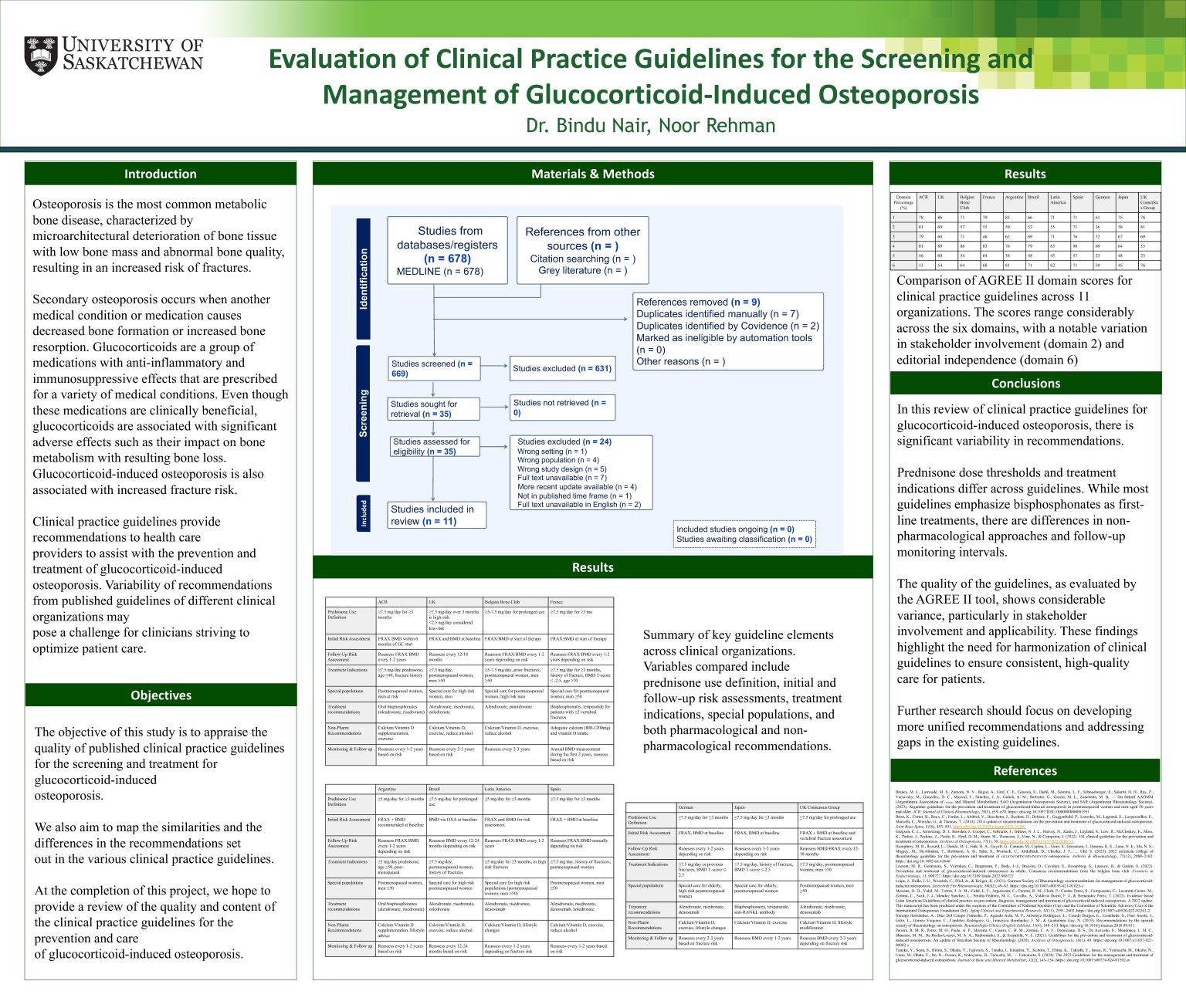
Evaluation of Clinical Practice Guidelines for the Screening and Management of Glucocorticoid-Induced Osteoporosis
Noor Rehman
Background: Glucocorticoid-induced osteoporosis (GIOP) is a common condition in patients on long-term glucocorticoids. Clinical guidelines for management of GIOP vary widely across organizations, leading to differences in treatment. This review aims to compare these guidelines in terms of screening and management and evaluate their quality using the AGREE II instrument.
Methods: A scoping review was conducted on guidelines from 11 clinical organizations addressing GIOP. Data was extracted from these guidelines on certain variables, including prednisone use, risk assessment, treatment indications, and pharmacological/non-pharmacological treatments. The quality of the guidelines was assessed using the six domains of the AGREE II instrument.
Results: Significant variability was found across the guidelines, including prednisone dose thresholds and treatment indications. Bisphosphonates were the most recommended first-line pharmacologic therapy but monitoring and follow up differed. AGREE II scores varied from 13% to 90%, with stakeholder involvement, editorial independence and applicability showing the most inconsistencies. Categories with the most consistency included clarity of presentation as well as scope and purpose.
Conclusion: This review highlights the need for consistency in GIOP guidelines. Standardizing recommendations could improve guideline adherence and reduce treatment differences. Future research should focus on addressing gaps and developing unified guidelines to optimize care for patients at risk of GIOP.
